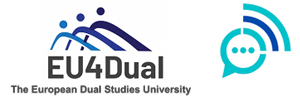Ever wondered about the communication filters we all possess?
Let's explore their complexity and impact on how we perceive the world around us.

Looking at Georges Seurat's painting “A Sunday on La Grande Jatte,” we can notice the characters absorbed in their own worlds with an apparent lack of direct eye contact, which highlights the isolation of individuals within the collective space and suggests a sense of limited engagement despite their proximity. This artistic piece can serve as a metaphor for the fragmented nature of interpersonal connections, particularly influenced by the communication filters that people construct.
***
It goes without saying that each person interprets received information through different filters, shaped by our age, gender, culture, situational context, emotional state, and personal beliefs. And let us not forget the influence of unconscious biases that add an extra layer of filtration before words are even spoken. These filters are dynamic, with some evolving based on our emotions and specific situations, while others remain steadfast in shaping our perceptions.
Filtering generally refers to the process in which information is withheld, distorted, or selectively presented before being communicated to others. In fact, communication filters are habits of thought that are operative for both the sender and receiver in every conversation. Many forms of filtering exist, but it has been argued that there are five most prevalent ones:
- Selective attention occurs when an individual concentrates solely on specific aspects of a message while disregarding others.
- Selective perception comes into play when a person interprets a message through the lens of their beliefs and values. For instance, people with different political affiliations may interpret a political speech in contrasting ways.
- Selective exposure manifests when an individual actively seeks information that aligns with their existing beliefs, purposefully ignoring information that contradicts their views.
- Selective retention takes place when a person retains specific parts of a message while forgetting others (in fact, memory selectively holds onto certain information).
- Semantic noise filtering is evident when a person encounters difficulty understanding a message due to language or cultural disparities.
Filtering might involve the intentional manipulation of information to present it in a more favorable light. Another motivation behind it can be rooted in the apprehension of delivering unfavorable information. Addressing barriers posed by communication filters can present challenges; however, implementing the following strategies may prove helpful:
- raise your awareness of filtering tendencies;
- foster an open-minded approach;
- use clear and unambiguous language;
- offer contextual information.
Keep asking yourself whether the filters you employ contribute to fostering clear and comprehensive communication, minimizing the likelihood of misunderstandings. Being aware of your own filters positions you effectively to manage your behavior, align your intent with impact in communication and steer it toward a productive trajectory. It is vital to remember that every element conveys a message, so do not forget to deliberate on the impression you wish to convey.
Before the interaction, take a moment to pause and direct your attention inward. Observe your thoughts, emotions, and bodily sensations. This practice enhances your awareness of your presence as you enter the conversation. Such fine-tuning enables you to identify moments when your filters may come into play during an interaction. Subsequently, you can make a conscious decision to step back, slow down the conversation, take responsibility for your behavior, and implement adjustments to steer communication back on a constructive course.
It is equally important to understand the filters of your audience and tactfully tailor your communication by considering what to say, what not to say, what to do, and what not to do, keeping their perspectives in mind. Respect, empathy and active listening can help avoid the imposition of your filters in the conversation and facilitate the understanding of theirs.
To draw a parallel, social media companies use algorithms to offer highly personalized and targeted recommendations to online users, thus create a so-called filter bubble. Being in a filter bubble implies that the algorithms have segregated you from information and perspectives that you have not previously indicated an interest in, potentially causing you to overlook important information. Having such limited and selective exposure hinders personal communication potential and comprehensive understanding of various topics. Therefore, it is essential to pop the filter bubble by evaluating the credibility of sources, seeking news from multiple information channels and watching for bias. In a similar vein, leaving the filter bubble in interpersonal communication plays a vital role, as it enables mutual understanding and effective dialogue.
So, in our dance of communication, let’s not let our filters lead.
Unmask the assumptions, kick out the biases, and waltz towards clear understanding!

 Polski
Polski



